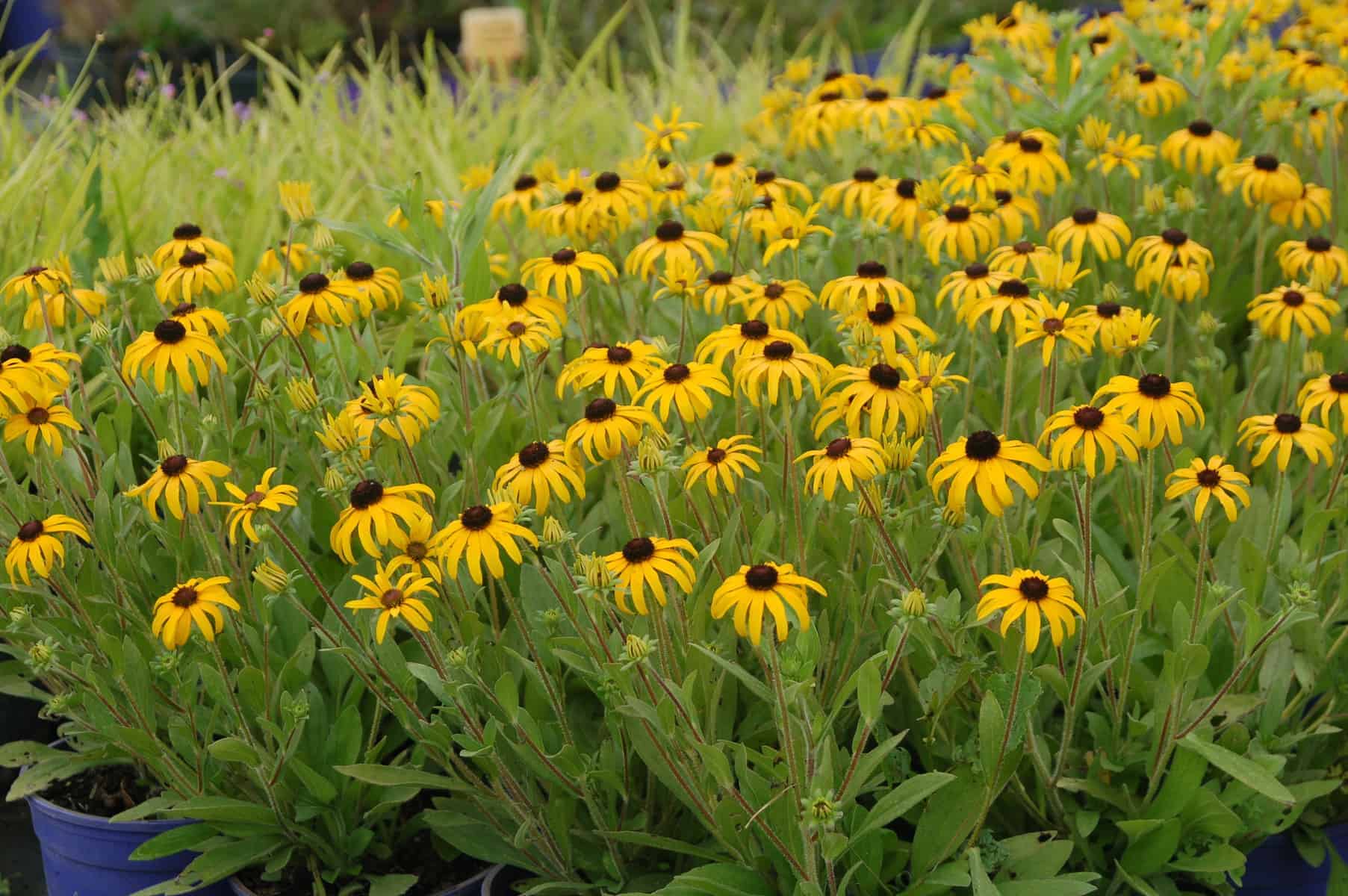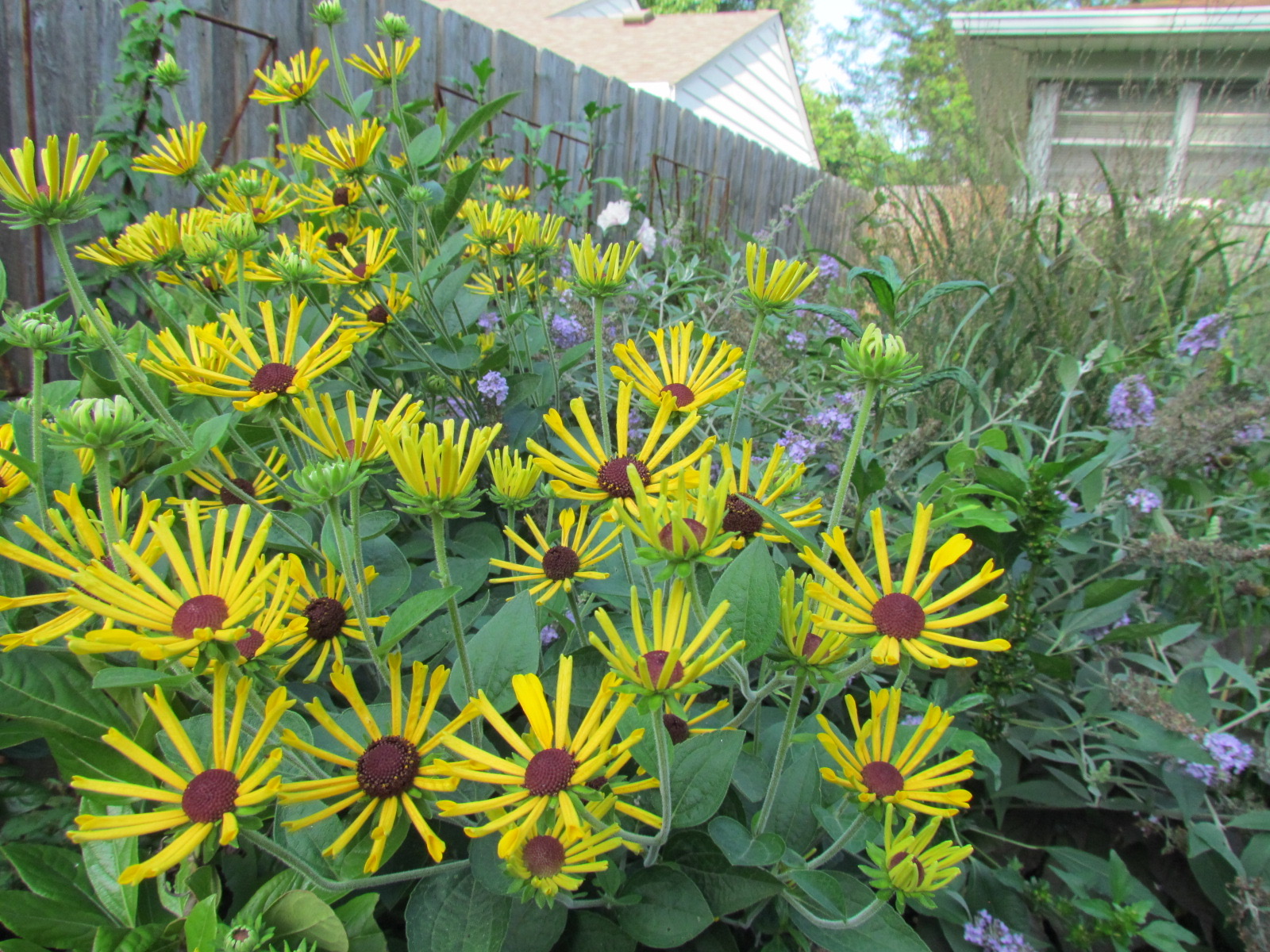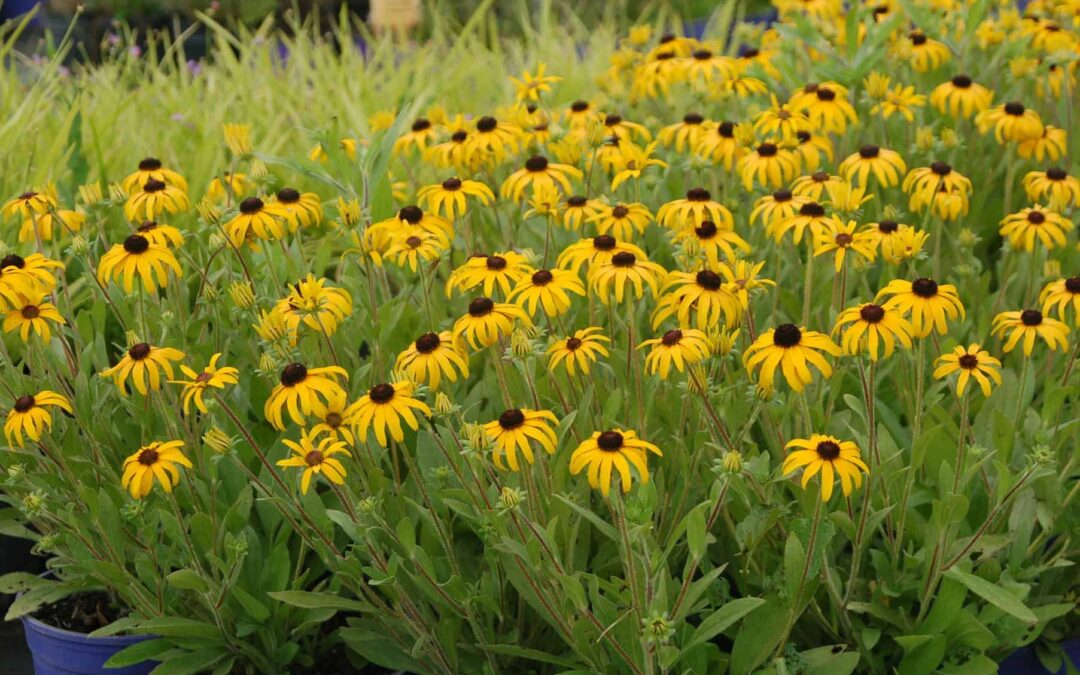
American Gold Rush, a native rudbeckia, is a 2020 AAS Winner and the 2023 Perennial Plant of the year. Photo courtesy AAS
Gardeners love black-eyed Susans (or gloriosa daisy) because they are native plants and because of their long bloom period. These usually unfurl their bright yellow or gold flowers from midsummer to early fall.
Unfortunately, a lot of black-eyed Susans, such as ‘Goldsturm’, get leaf diseases, which detract from the plant.
Enter American Gold Rush (Rudbeckia hybrida). This plant’s narrow hairy leaves were bred to be resistant to Septoria leaf spot and other fungal diseases, even in wet, humid conditions.
Native named 2023 Perennial Plant of the Year
American Gold Rush is a 2020 All-America Selections winner in the herbaceous perennial category. And for 2023, the Perennial Plant Association has named American Gold Rush the Perennial Plant of the Year.
Because this rudbeckia has been on the market for a while, the perennial should be available at most garden centers, online plant retailers and landscape companies. One of the AAS judges remarked “Would make an excellent addition to a yard, especially in any sort of mass planting.”
Grow American Gold Rush in full sun and soil that drains well. It also tolerates dry conditions. The flowers are about 2 inches wide, and they have large black centers. The perennial gets about 2 feet tall and wide. The stems are tall enough that they can be cut for indoor summer or fall arrangements.
“I believe this is one of the very best rudbeckias I’ve trialed and one of the very best perennials, too,” another AAS judge commented.
Quilled petals on native rudbeckias
Another native rudbeckia worthy of a spot in the landscape is ‘Little Henry’. Sometimes call gloriosa daisy, this is a smaller version of ‘Henry Eilers’. Each Henry has quilled petals, a unique trait that makes them stand out in the landscape.

Quilled petals on ‘Little Henry’ rudbeckia make the native perennial a standout in the summer garden. (C) Photo Jo Ellen. Meyers Sharp
‘Henry Eilers’ gets about 6 feet tall when blooming and at least 2 feet wide. ‘Little Henry’ will be about 4 feet tall when blooming and about 2 feet wide. They bloom in late summer into fall.
If you’ve thought about adding more native plants to your landscape, talk to your Holeman Landscape pro.

